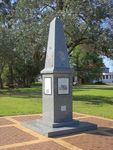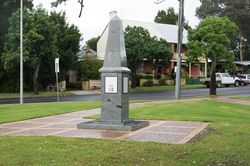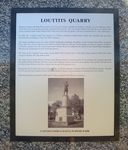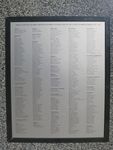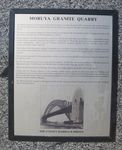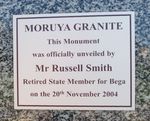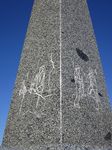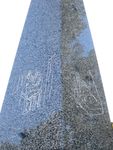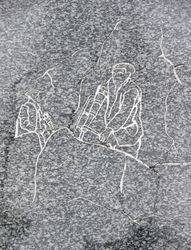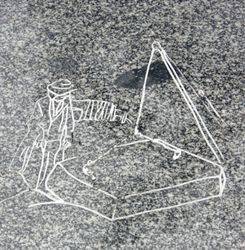
Home » Themes » Technology » Industry
Moruya GranitePrint Page 
The monument commemorates that Moruya granite was used in the construction of the Sydney Harbour Bridge and that Moruya Quarries contributed to the history of New South Wales.
In 1928 the British company of Dorman Long got the contract to build the Sydney Harbour Bridge. They leased the granite quarry on the north bank of the Moruya River and began cutting and dressing the granite blocks there for the four pylons on the ends of the Sydney Harbour Bridge. All the cutting and dressing of the granite blocks was done right there on the banks of the river before shipping them up to Sydney. Every piece was cut and numbered and ready to put in place.
Location
| Address: | Campbell & Vulcan Streets, Apex Park, Moruya, 2537 |
|---|---|
| State: | NSW |
| Area: | AUS |
| GPS Coordinates: | Lat: -35.9120528 Long: 150.0800917 Note: GPS Coordinates are approximate. |
Details
| Monument Type: | Monument |
|---|---|
| Monument Theme: | Technology |
| Sub-Theme: | Industry |
Dedication
| Actual Monument Dedication Date: | Saturday 20th November, 2004 |
|---|
Moruya Granite
A celebration of the granite quarries in Moruya that contributed to the history of New South Wales
[ Image ]
Workers at Moruya Granite Quarry
Circa 1926
Plaque :
Moruya Granite
This monument was officially unveiled by Mr Russell Smith retired State Member for Bega on the 20th November 2004
Moruya Granite Quarry employees during the construction of the Sydney Harbour Bridge 1925 - 1931
[ Names ]
Moruya Granite Quarry
The Moruya Quarry, also known as Government Quarry, was first opened in 1876. Located on the northern bank of the Moruya River, its great claim to fame was providing the stone for the piers and pylons of the Sydney Harbour Bridge.
The quarry was chosen to supply the stone because of its proximity to the river made it ideal for loading the barges with the blocks of granite, one of which weighed over 20 ton.
Work began in 1925 and continued for seven years. During this time there were 250 men of 13 nationalities on the payroll of the contractor, Dorman Long & Co. A township of 300 people sprang up at the quarry and was aptly named Granitetown. There were 67 cottages, bachelors` quarters, quarters for the Italians, a post office, co-operative store, school and hall.
John Gilmore was the quarry manager responsible for every block of granite in the bridge, each of which was hewn, cut, dressed and aranged into position to then be numbered before shipment like a jigsaw puzzle. Not one stone was rejected.
He was also responsible for directing workers as they cut, dressed and inscribed the Cenotaph Stone for Martin Place in Sydney in 1927.
In 1931, the work drew to an end as the job was complete. In that time, the quarry produced 18,000 cubic metres of dimension stone, 173,000 blocks and 200,000 yards of crushed stone that was used for concrete.
West of Moruya Quarry at Pompey Point there was another quarry operated by the Zeigler family.
Along with the Moruya Quarry, it and possibly another quarry produced dimension stone for building and monumental work for many New South Wales landmarks as well as training and breakwalls surrounding the Moruya River mouth. The Ziegler Quarry also produced random or coursed rubble for local buildings such as the Sacred Heart Roman Catholic Church in Moruya.
The Moruya Granite Quarry is still operated today by the state government Department of Infrastructure, Planning and Natural Resources.
[ Image ]
The Sydney Harbour Bridge


